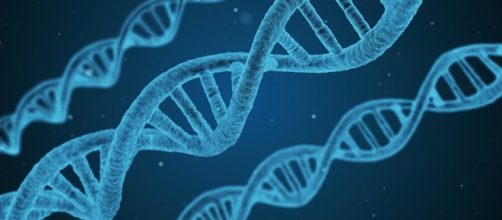For years, experts have been studying the contributing factors behind the neurodevelopmental disorder called Autism. Previous studies suggested that both the environment and Genetics play a vital role in the development of the condition.
A new research published in the Journal of the American Medical Association (JAMA), however, revealed that an individual’s genetic makeup plays a major part in autism. According to Sven Sandin, lead study author and assistant professor of psychiatry at Mount Sinai’s Icahn School of Medicine in New York, they found the “most accurate” evidence about genetics’ role in the disorder, Time noted.
The role of heredity
Through the re-analysis of previous studies, Sandin and his team found that genetic factors contribute to nearly 83 percent of autism risk in children with the condition. To show the significance of genetics or Heredity, researchers determined the prevalence with which neurodevelopmental disorders are in different types of siblings like in twins or half-siblings.
By looking into 2.6 million pairs of siblings, 37,570 pairs of twins, and almost 888,000 pairs of half-siblings, they found that the “likelihood” to have another child or sibling with autism is increased in couples who already have a child with the condition, HealthDay reported. Although the researchers were not able to determine the specific genes or other direct causes, Sandin stressed their findings showed the significance of genes in the development of the disorder.
New research says a person’s likelihood of having #autism is largely based on genetics. https://t.co/dVSEZ4PiFB@CharisEngMDPhD pic.twitter.com/Qmfk09MkR1
— Cleveland Clinic (@ClevelandClinic) September 26, 2017
Environmental factors
Even though environmental factors are linked to neurodevelopmental conditions, the researchers said their contributions to the development or the risks of autism spectrum disorder (ASD) are minimal.
As per Autism Speaks, environmental factors include prenatal exposure to toxic chemicals like valproic acid and thalidomide.
There are also other risk factors to consider like maternal nutrition, parental age at conception, prematurity and exposure to infection during pregnancy, as per Daily Independent. But the experts highlighted in their study that “heritability of ASD was high and the risk of ASD increased with increasing genetic relatedness.”
Suicidal tendencies
In other related reports, suicidal tendencies in some people with autism are hard to determine.
According to Spectrum News, it is important to “learn how to ask questions that lead to real answers.”
The number of suicide attempts and deaths increases among people on the spectrum, where 50 percent of adults diagnosed with the condition have thought about suicide. That’s why the publication highlighted risk factors for suicidality in general and in people on the spectrum.
These include environmental stressors (financial or legal dilemmas), cognitive and sociodemographic vulnerabilities (impulsivity or hopelessness), and mental health issues (depression or bipolar disorder). Spectrum News’ Katherine Gotham also stressed that there are perfect screening tools.
So, it is really important to start with asking questions in a “calm, unapologetic and non-reactionary” approach.
It is also vital to assess the person’s suicidal thoughts intensity or frequency, as well as the history of attempts.
Stereotypes
As people aim to change the world’s general perception on autism, popular culture becomes engrossed with it. In fact, three current television series — “The A Word,” “Atypical” and “The Good Doctor” — are all depicting one common subject and that is ASD.
Will you be watching the debut of #TheGoodDoctor tonight on ABC at 10/9c? The show centers around a surgeon on the #autism spectrum. pic.twitter.com/K0mRa5OC3X
— Autism Speaks (@autismspeaks) September 25, 2017
In the United States, the Center for Disease Control and Prevention (CDC) revealed that one in 68 children is diagnosed with the condition.
It is also predominantly seen in males compared to female kids.
As this subject matter becomes a popular trend, however, various media depictions of the condition also spawned some “annoying” stereotypes. The said shows are stereotyping them as individuals with special talents, Variety noted.
But in reality, people need to realize and accept that not all people on the spectrum have special abilities. Fortunately, the series also highlights the stigma and societal challenges experienced by people with autism.


